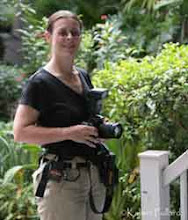
Let’s see, how can I describe Mayfair – How about 15 bottles of water during the show and only needed two bathroom breaks… Yes, it was hot, and windy, and buggy, but a good show nonetheless. A nice end to the Florida season. Here in Florida, the season is ending. There won’t be another show until the end of September.
So I’m taking this time to revamp and rest. A new printer, a new print bin, and a new booth design for the fall. I may even take Monday for a photo trip. In the meantime, Florida is hot and dry. Rain was promised for today but I haven’t seen any yet.
In the meantime here’s a new featured photograph from my Everglades trip earlier this year. This is from Shark Valley and I call it Blue Heron Perch. I hope to be sharing more with you in the coming days.
Speaking of parks and wildlife I was upset to read an article this past week on how our wildlife refuges have become so under funded that criminal activity is starting to take hold and many of our refuges are completely unstaffed. How shameful that we are letting this happen. How sad that our grandchildren may not have these places to enjoy.
http://www.msnbc.msn.com/id/17634561/
http://www.funoutdoors.com/node/view/1432
So I’m taking this time to revamp and rest. A new printer, a new print bin, and a new booth design for the fall. I may even take Monday for a photo trip. In the meantime, Florida is hot and dry. Rain was promised for today but I haven’t seen any yet.
In the meantime here’s a new featured photograph from my Everglades trip earlier this year. This is from Shark Valley and I call it Blue Heron Perch. I hope to be sharing more with you in the coming days.
Speaking of parks and wildlife I was upset to read an article this past week on how our wildlife refuges have become so under funded that criminal activity is starting to take hold and many of our refuges are completely unstaffed. How shameful that we are letting this happen. How sad that our grandchildren may not have these places to enjoy.
http://www.msnbc.msn.com/id/17634561/
http://www.funoutdoors.com/node/view/1432



